You have a lot of goals for your app: Create something cool that helps people. Offer an amazing user experience. Attract millions of happy users.
And make money, of course.
There are so many ways to monetize apps that choosing the right mobile application monetization strategy isn’t easy.
Do you already know how to monetize an app? And which of the app monetization options is right for your business? Should you charge per download? If not, how do you make money off of free apps? How do you generate steady revenue without damaging the overall user experience?
In this article, we’ll cover monetizing an app, some pros and cons for each monetization model, and examples of apps that have implemented each approach successfully.
App Monetization Statistics
There’s a lot of money to be made on mobile: global consumer spending on apps hit $120 billion in 2019.*
What are the most popular application monetization models? Many apps choose to combine models, offering different options for different types of users.
- 56% of apps currently use a subscription model*
- 54% of apps offer a freemium model that includes in-app purchases*
- 47% of apps use some form of in-app advertising*
Over 40% of mobile brands say ensuring non-intrusive ad content is one of their biggest challenges in monetizing applications. Concern about monetization efforts negatively impacting the app experience and contributing to churn was the second biggest challenge.*
While playable ads are the most commonly used in-app ad format, rewarded video ads are shown to be the most engaging ad format for users.*
1. Freemium Model: Monetize Your App To Grow a Large User Base
Freemium mobile apps are free to download. So how do free apps make money? Users can access the app’s basic functionality, while certain features or content can be unlocked by making a purchase.
Approximately 94% of apps follow this free app business model.*
If you’re looking to grow as large a user base as possible, this is an effective strategy — free apps see dramatically higher download rates. Which isn’t surprising, since users are more likely to download if they can try your app before they pay for it.
So how do you monetize your app? The key to making freemium work is ensuring users experience enough value in the free version to convince them to open their wallets for more.
It can be tricky to strike the right balance between offering too many or too few free features. If the free version is too good, there’s no incentive for users to upgrade. If it’s not good enough, users won’t be convinced the app is worth paying for.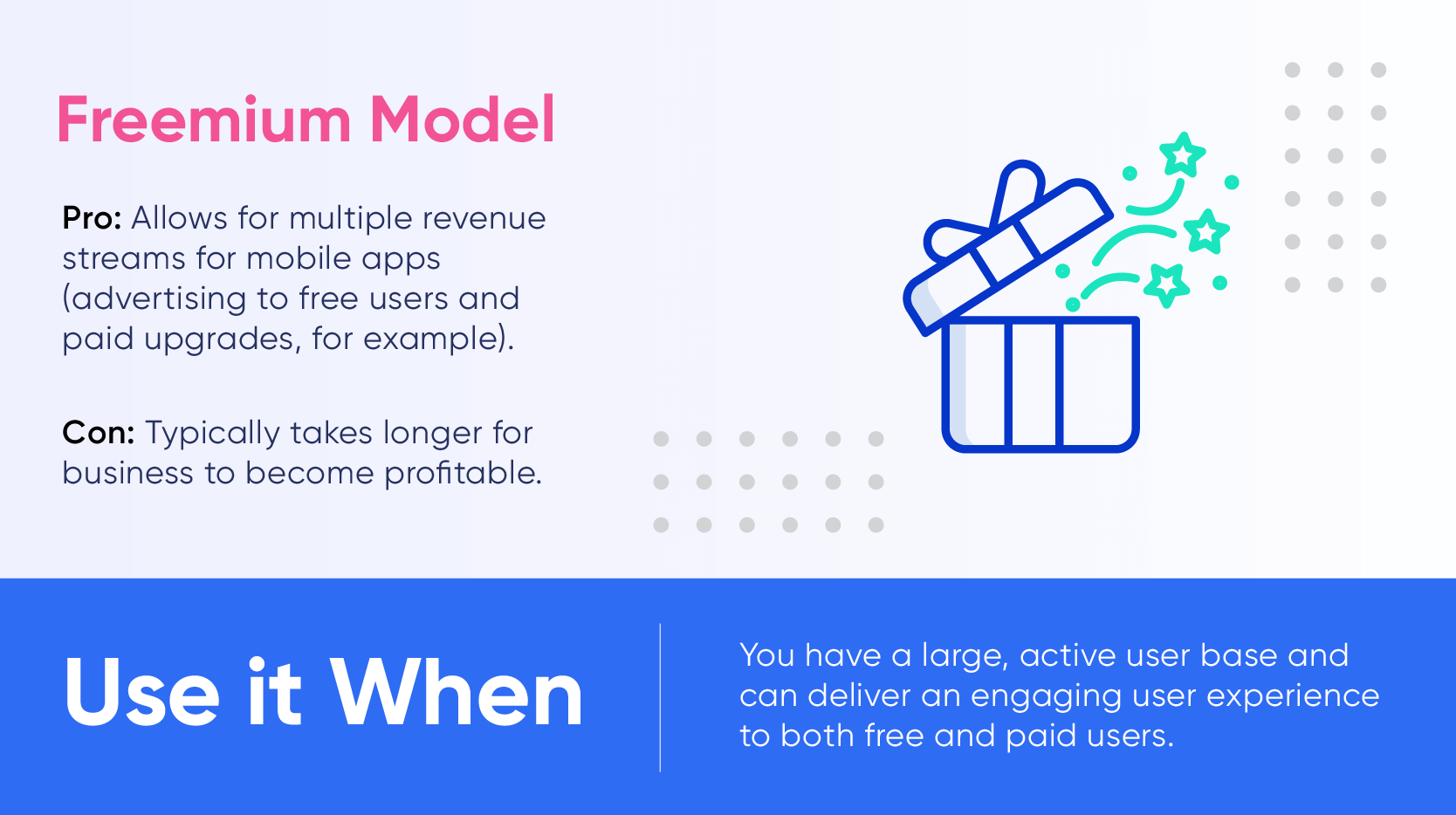
Freemium Model Example: Spotify
Spotify is the king of the freemium model. While most freemium apps see average conversion rates between 2-5%,* Spotify converts an astronomical 42% of freemium users into paying subscribers.*
So what’s their secret?
According to an article in Harvard Business Review,* Spotify emphasizes data over opinion and authority. Experimentation, constant A/B testing, and a heavy emphasis on analyzing user data give the streaming powerhouse critical insights that inform their product development, marketing, and app monetization strategies.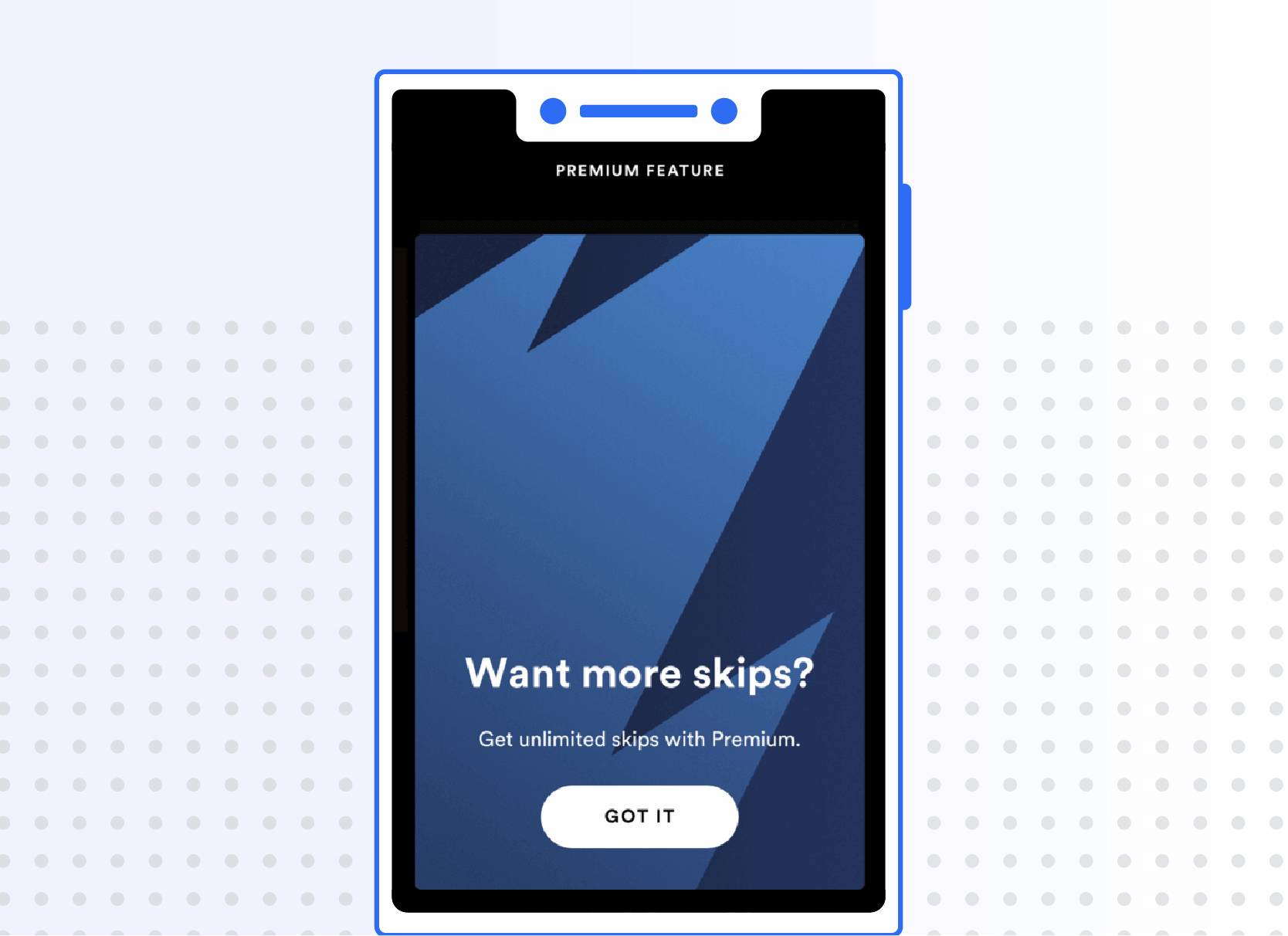
2. Premium Model: Monetizing an App Up Front
Should you charge for your app? Upfront revenue earned with every download and faster profits can be compelling reasons to choose a premium model.
Plus, paid apps generally see higher user engagement and loyalty.* People are simply more likely to use something they’ve paid for.
But there are drawbacks. Just 20% of paid apps are downloaded more than 100 times and only 0.2% are downloaded more than 10,000 times.*
To determine if this is a good app business model for you, take a look at your competitors: is your app obviously superior to the free alternatives? Why would a potential user choose your app over a free download?
One of the keys to achieving success with this approach is establishing the value of your app right away. That means as many five star ratings as possible, alongside a compelling description, rich UI, and comprehensive feature set.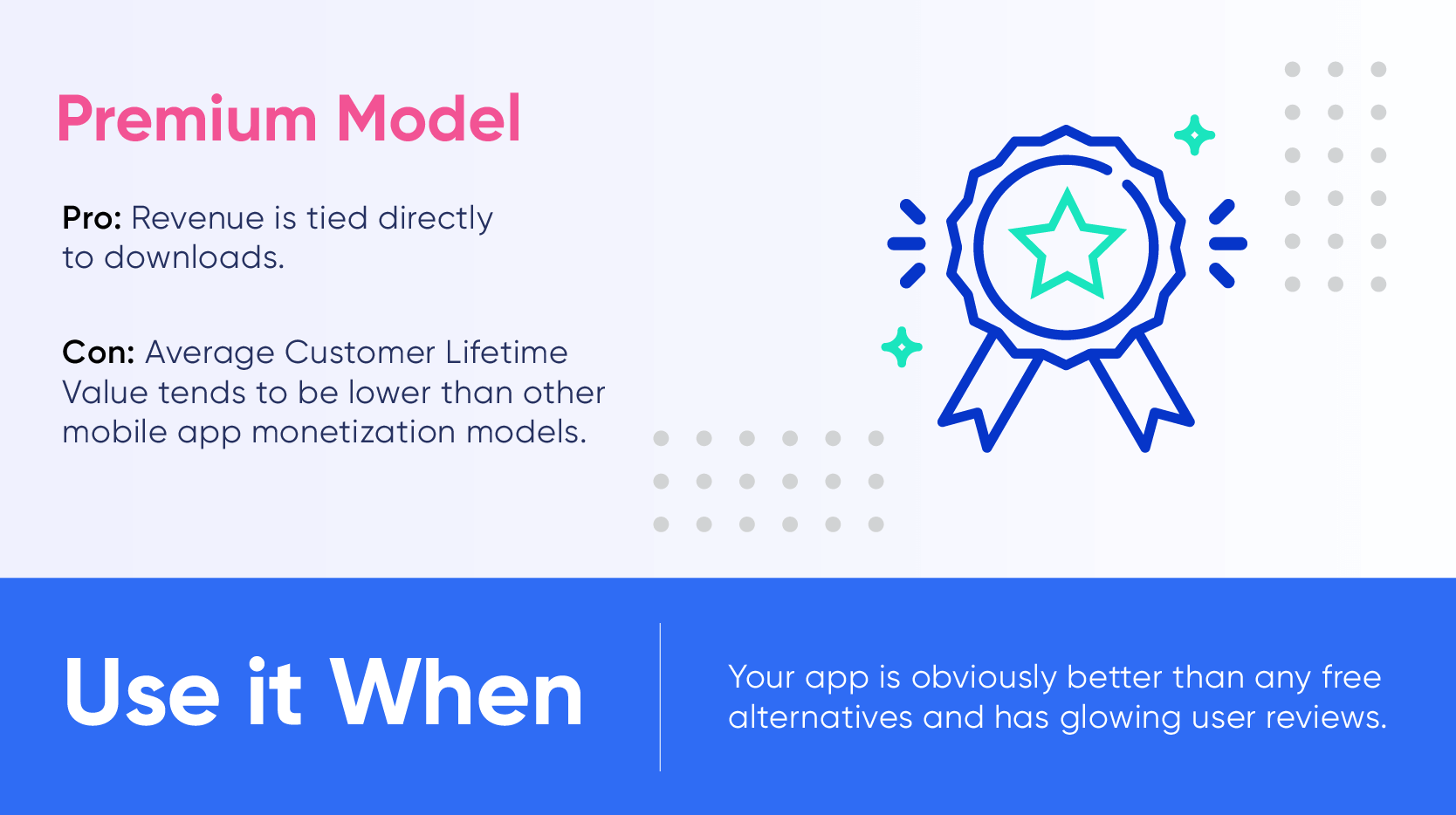
Premium Model Example: Dark Sky Weather
With over 30k downloads, Dark Sky Weather has been one of the most popular paid apps in the app store since it launched in 2012.
Impressive screenshots of the UI, thousands of high ratings and rave reviews, a featured Editor’s Choice Award, and #1 ranking in the weather app category all justify the price to potential users.
And since apps in the $2.50-$5 range see the second-highest number of downloads after free apps,* it’s strategically priced at $3.99 to convert the maximum number of users.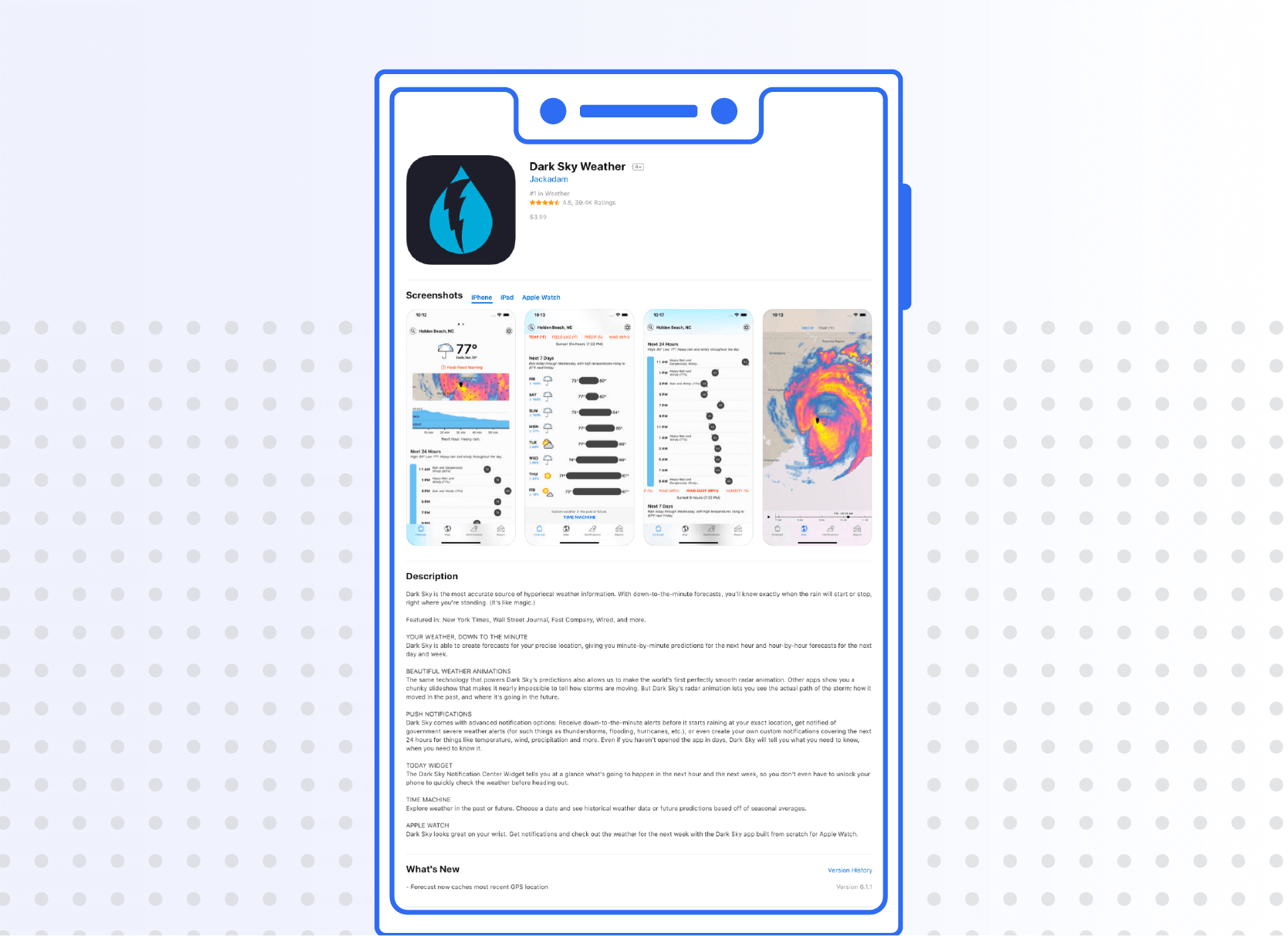
3. In-App Purchases: Monetizing Applications By Promoting Offers
In-app purchases are a major revenue stream for apps, generating $50.1 billion in just the first half of 2020.* They allow users to buy content, services, or special features (like a game booster that skips a level, sets of photo filters, or personalized workout plans) within an app.
If you’re considering integrating in-app purchases, make sure they complement the user experience, not disrupt it. Each one should add to the value users get from your app and not be simple cash grabs.
And be sure to let users know on your App Store page that while your app is free, it does include in-app purchases.
To be successful with this approach, you’ll need a strategy to encourage users to spring for in-app purchases. Send personalized notifications to users about in-app purchases that fit their browsing or activity history, offer time-sensitive discounts, and thank users for purchasing. And use push notifications to increase in-app purchases by 16%.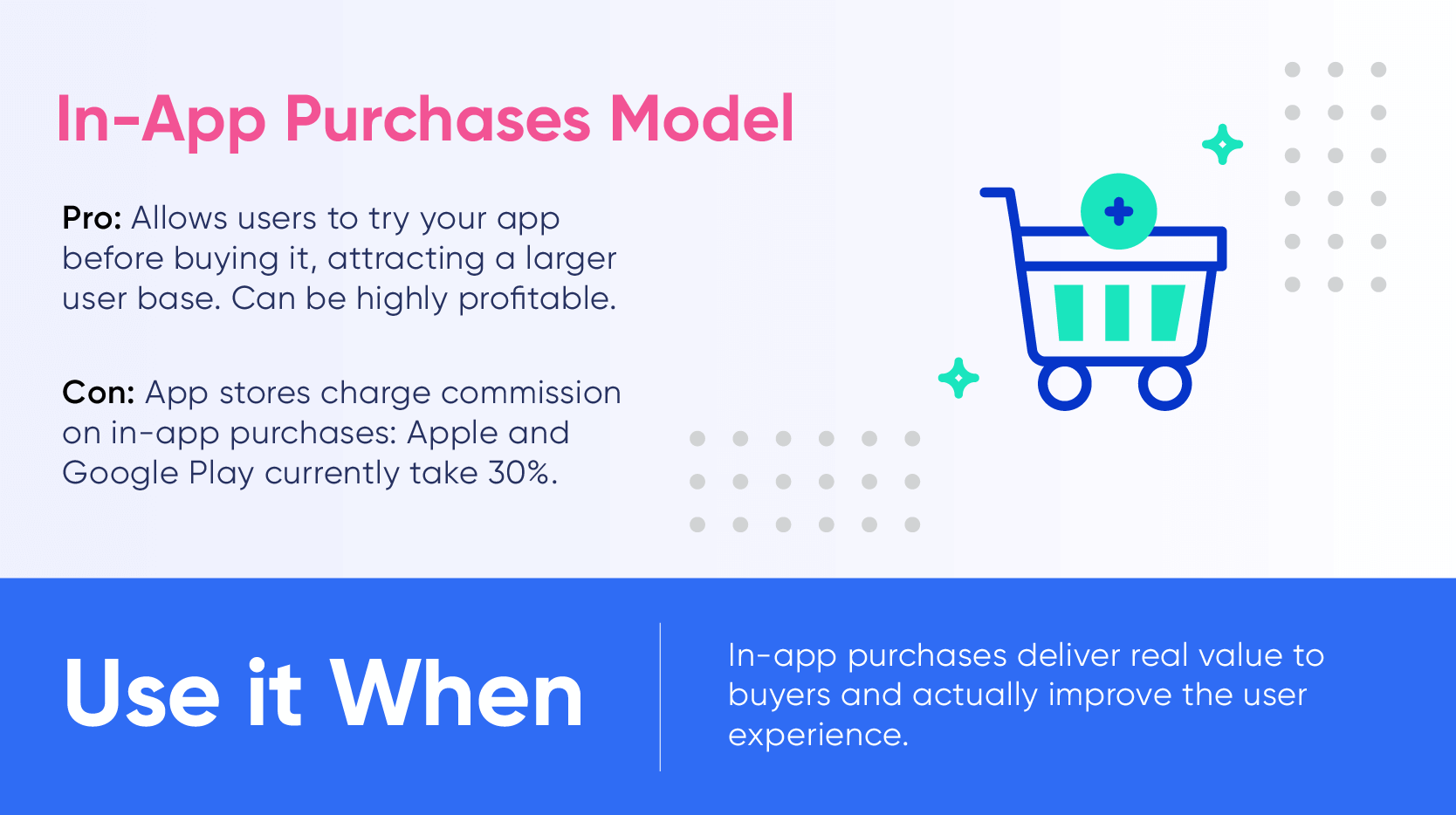
In-App Purchase Example: VSCO
Successful photo editing app VSCO is available as a free download, monetizing its 30 million monthly active users* by offering in-app purchases of photo presets. Preset packs cost between $0.99 and a few dollars, and each have their own aesthetic for creating specific types of images.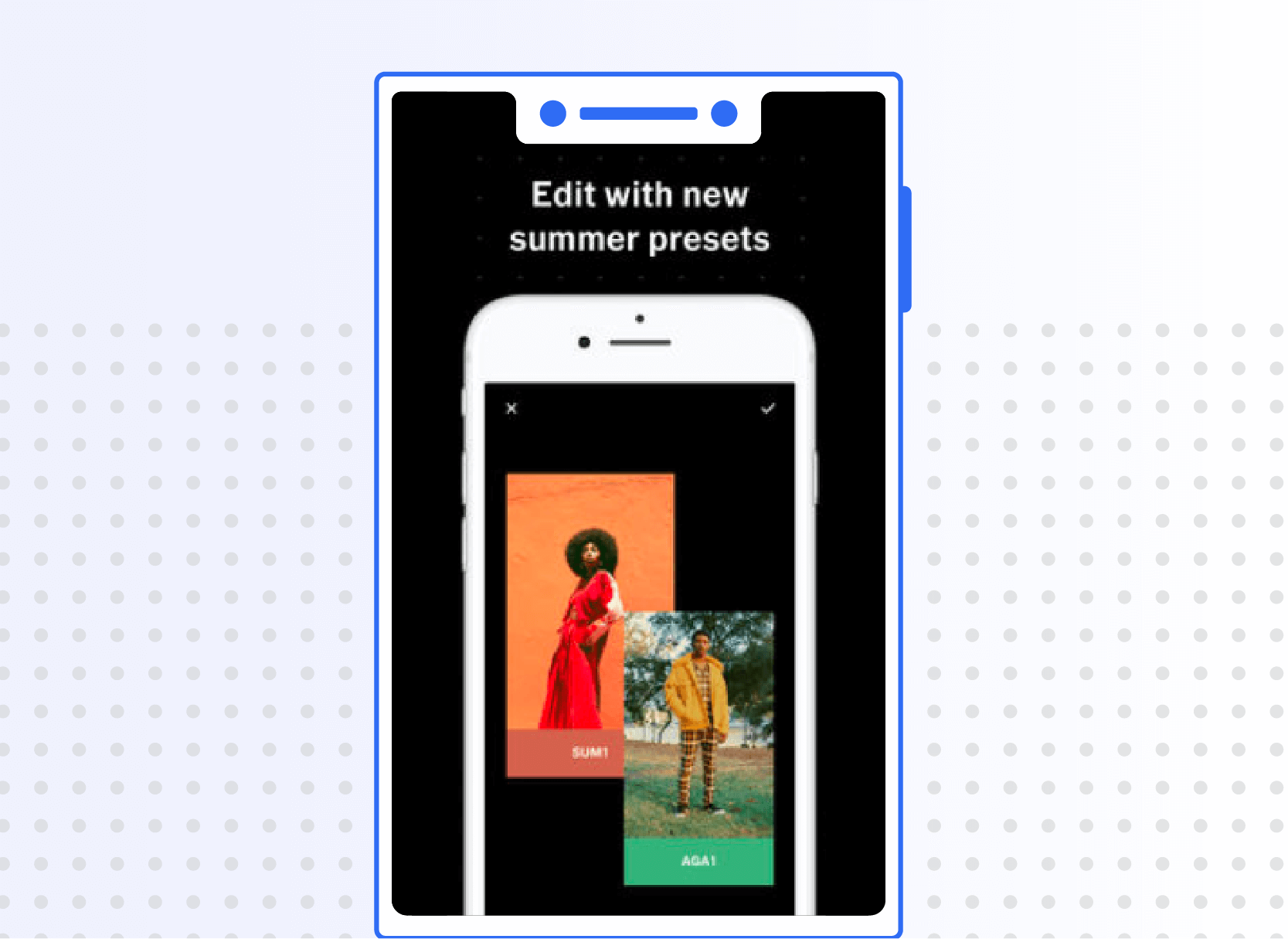
4. In-App Advertising: Application Monetization Through Eyeballs
Which is better: monetize app with ads, or monetize app without ads?
By removing the barrier to pay up front, apps that use in-app advertising look to attract a large enough user base and gather sufficient information about them to place highly targeted ads for advertisers.
It’s an incredibly fast-growing advertising outlet: app-install ad revenue in the US is predicted to hit more than $7 billion by the end of this year.*
Why? In-app ads perform 11x better than normal banner ads, with 152% higher click-through rates.*
As with any mobile app monetization model, the user experience is critical when it comes to in-app ads. In-app ads don’t have to be intrusive or pushy — when ads are highly targeted and present the right offers to the right users, they can add value for both the advertiser and the user.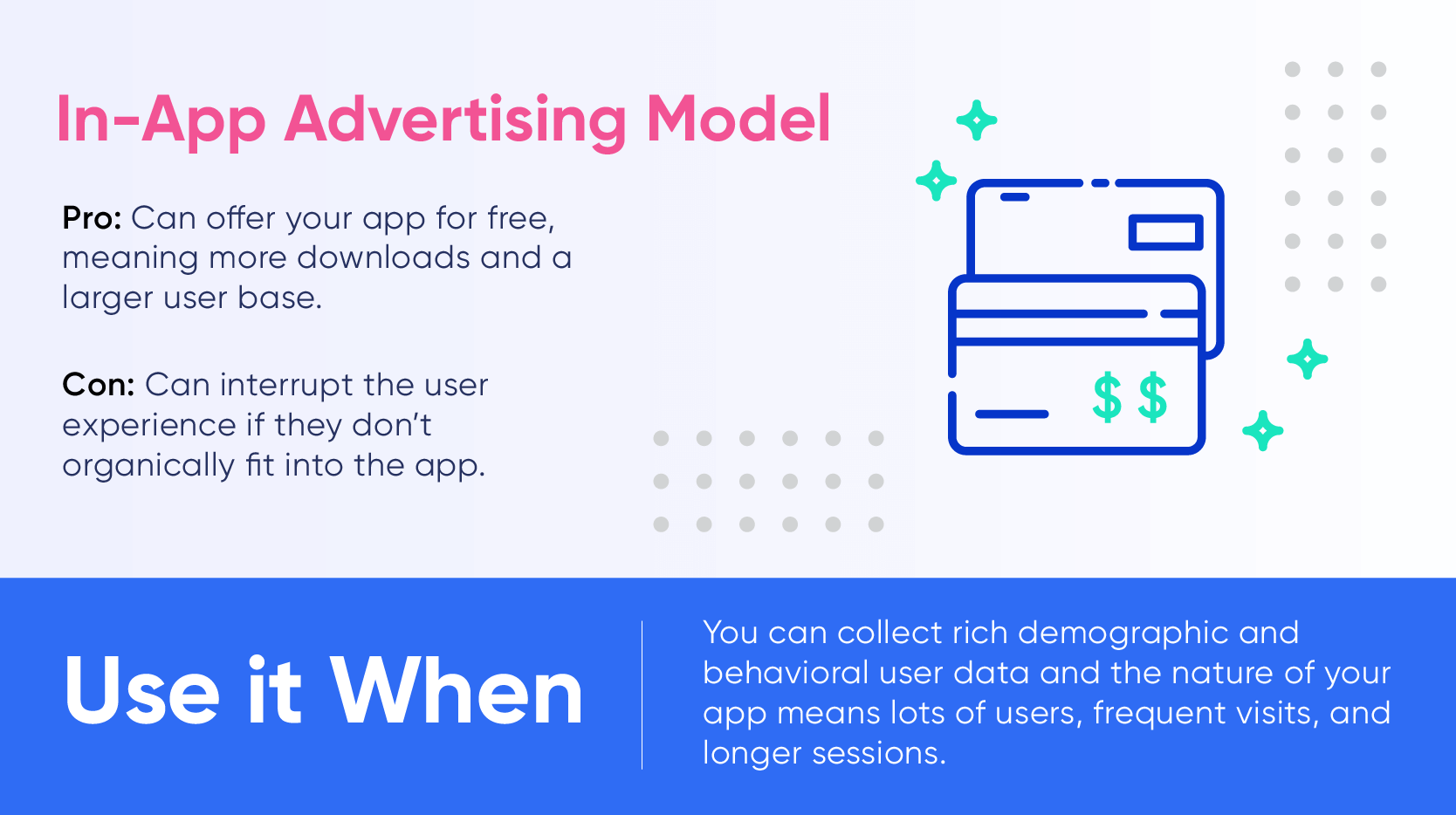
In-App Ads Example: Instagram
When the photo-sharing network introduced ads in 2013, many Instagrammers worried about annoying ads disrupting the user experience.
But with highly specific audience targeting, users not only accept ads on the platform but happily engage with them. Instagram ads convert at 1.08%,* compared to a 0.07% average for display ads.*
With over two million companies using Instagram ads and promoted stories to reach audiences, Instagram brought in a staggering $20 billion in global mobile ad revenue in 2019.*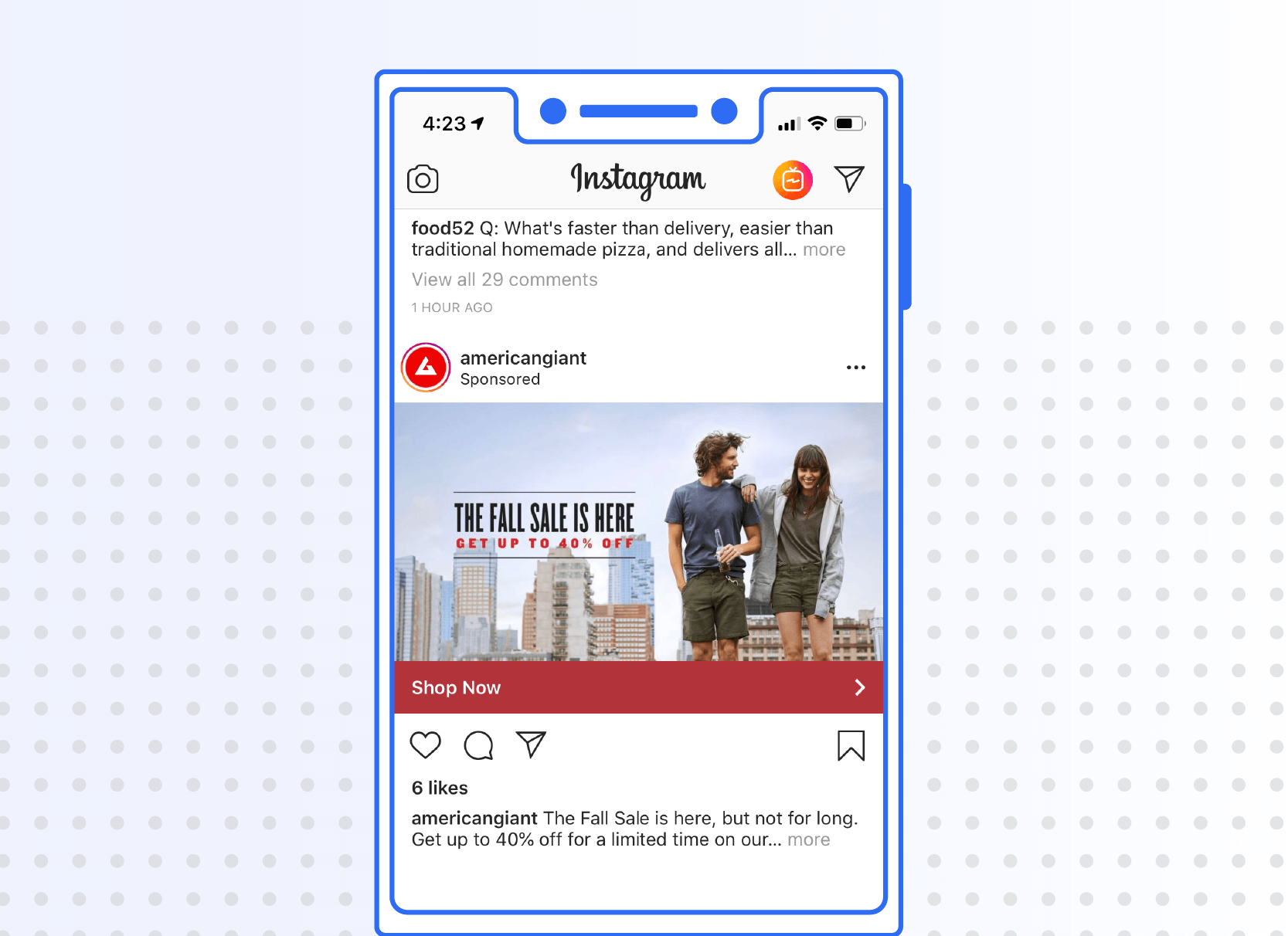
5. Subscriptions: Application Monetization Via Recurring Payments
Subscription models offer your users more options than simply “buy” or “don’t buy.” Many apps offer several subscription tiers with a mix of features and pricing, convincing hesitant users to subscribe at a lower tier and upselling them over time.
Longer subscription plans also offer the benefit of predictable revenue, so apps can be more confident in their product development and marketing budgets.
52% of app developers who implemented a subscription model say it had a positive impact on their business, growing both their revenue and their user base.*
Just know that choosing a subscription model means not only focusing on converting users into subscribers but keeping current subscribers from churning. You’ll need to clearly explain the benefits of upgrading to free users, as well as continually offer subscribers new features and content to keep them around.
Subscription Model Example: Headspace
Since 2014, the popular mindfulness app has offered guided meditation on relationships, athletic performance, productivity, sleep, and dozens of other topics.
Now, Headspace has over 65 million downloads, more than 2 million paying subscribers, and annual revenue of $100 million.*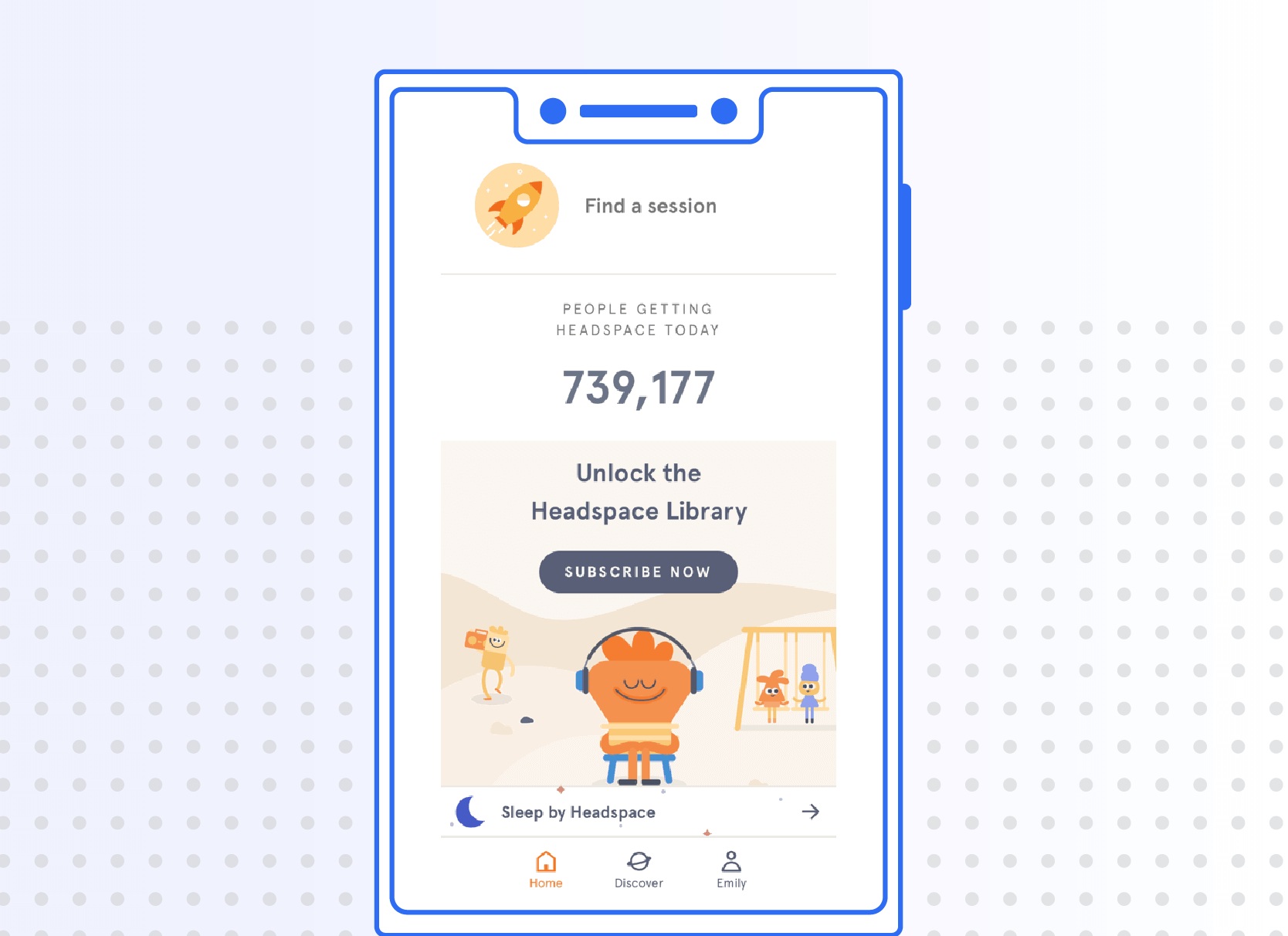
6. Sponsorships and Partnerships: How to Monetize an App Via Advertiser Rewards
Sponsorship entails collaborating with advertisers who will provide rewards to your users when they complete certain in-app actions.
For example, Marriott promoted its Marriott Rewards Premier credit card to business travelers through an exclusive sponsorship of the Gayot lifestyle app, which features professional reviews for restaurants, wine, and spirits.
The sponsorship model assumes that your user base is big enough (or niche enough) to attract brands to pay for greater exposure to your audience.
With partnerships, you collaborate with another app whose user base corresponds with your own. It’s a mutually beneficial relationship that helps each of you improve your offering and attract more users.
Sponsorship & Partnership Example: Nike+ and Headspace
As Headspace expanded its sports meditation content, they worked with leading sports psychologists to determine how high-performance athletes might benefit from mindfulness training.
With the Nike+ and Headspace partnership, users can improve motivation, focus, athletic performance, and recovery — not to mention enjoy their workouts more.
In addition to coaching from Nike pros and elite athletes on pacing, speed, and endurance, the new guided runs include advice from Headspace experts to improve the running experience and help users look forward to their workouts.
For both Nike and Headspace, it means highly engaged users — and more of them.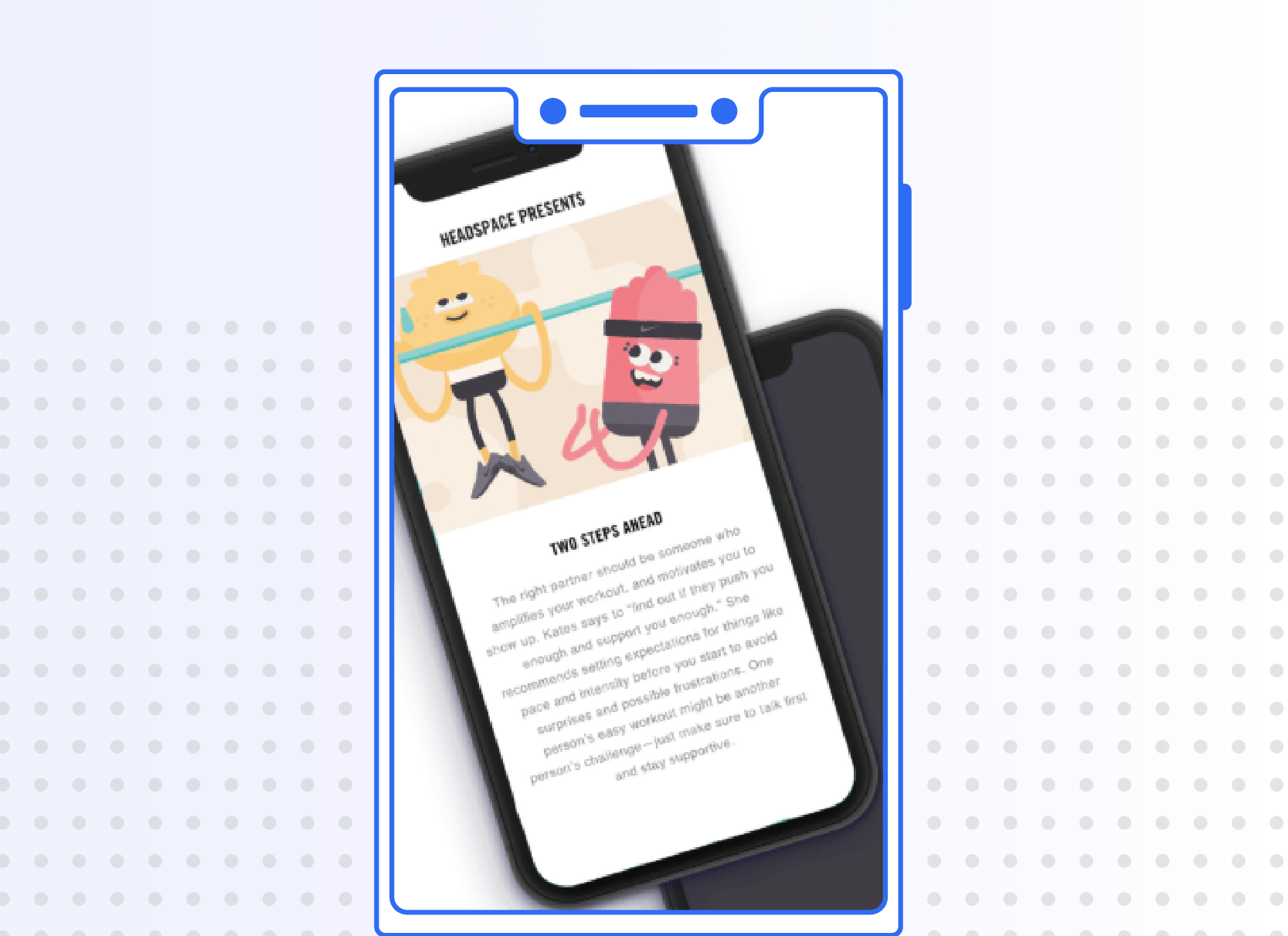
Which Monetization Model is Right for Your App?
A few questions to consider as you decide how to monetize your app:
- What’s unique about your app?
- Would people be willing to pay for it? How much?
- What app business model do competitors use and has it worked for them?
- What’s more important for your business right now: to gain users or gain revenue?
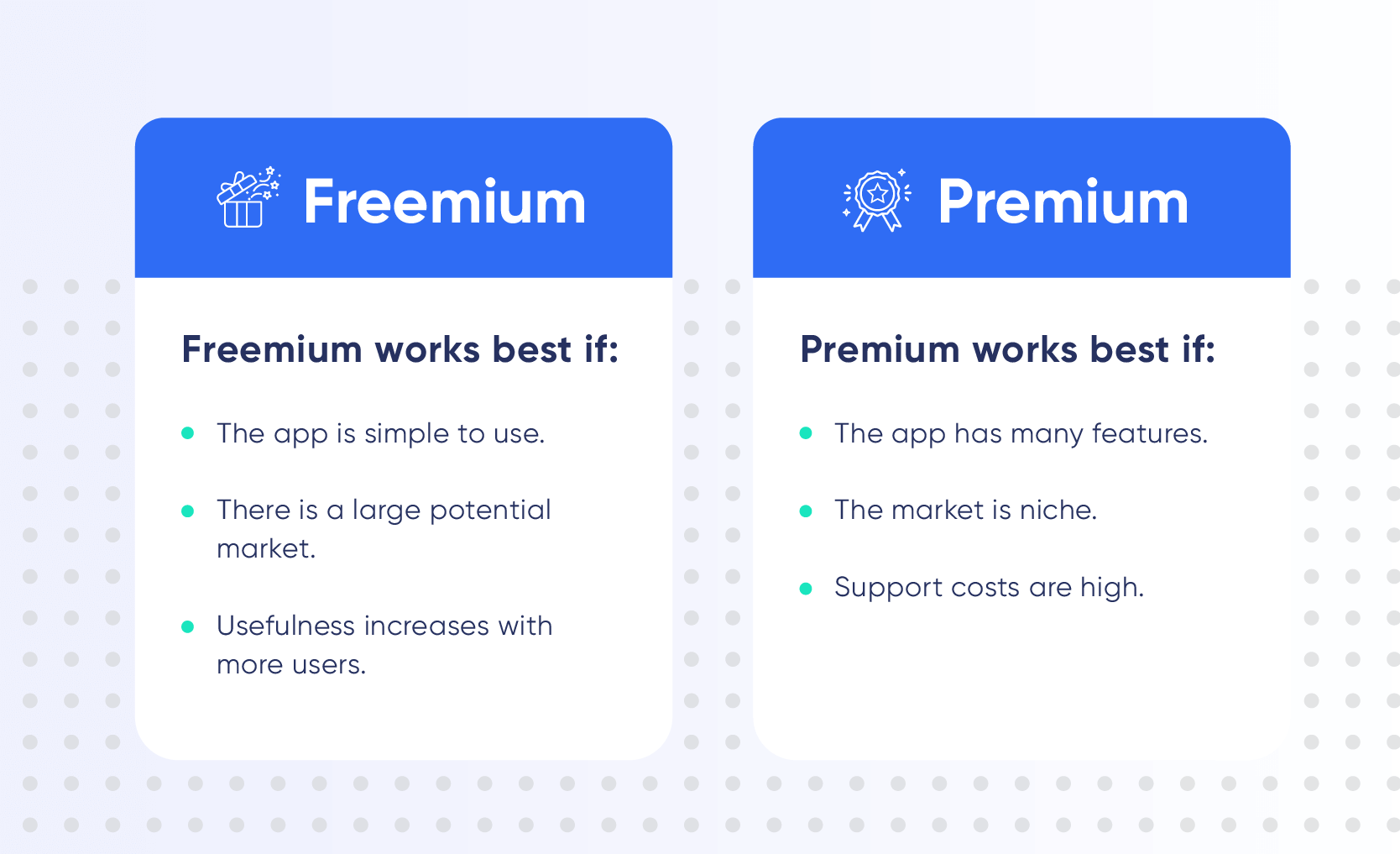
Some apps choose to earn money from the get-go and acquire users more slowly. Others focus on growing their user base quickly and then monetizing. Your business goals will determine (or help rule out) effective monetization models.
Another important point to keep in mind: many monetization models aren’t exclusive. You can mix and match by offering a free app with targeted ads, and an ad-free Premium version of your app for users who wish to pay, for example.
How Will Your App Make Money?
Decided on the best monetization strategy for your app? Get practical tips for implementing it successfully, along with more real-world examples of apps that have used these strategies to generate real revenue. Get the free ebook: Mobile App Monetization Strategies.

Mobile App Monetization Strategies
Shivkumar M 
Head Product Launches, Adoption, & Evangelism.Expert in cross channel marketing strategies & platforms.
Free Customer Engagement Guides
Join our newsletter for actionable tips and proven strategies to grow your business and engage your customers.















































